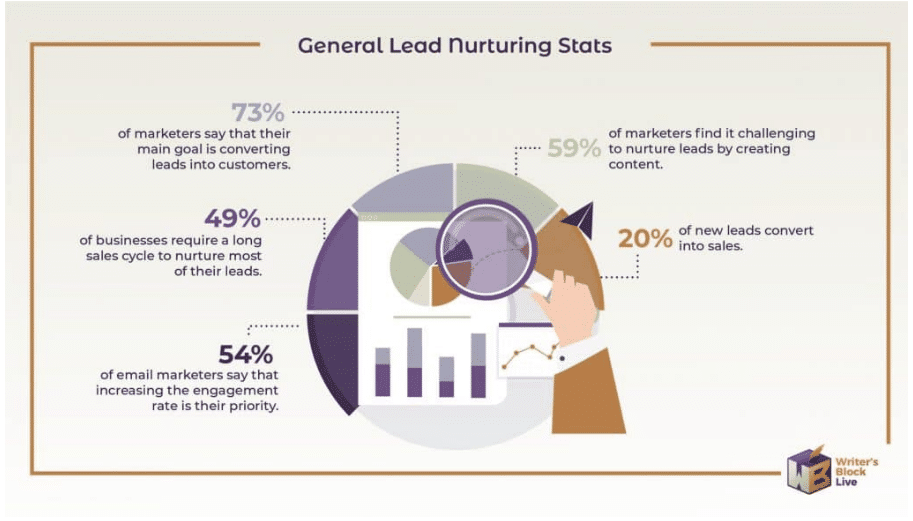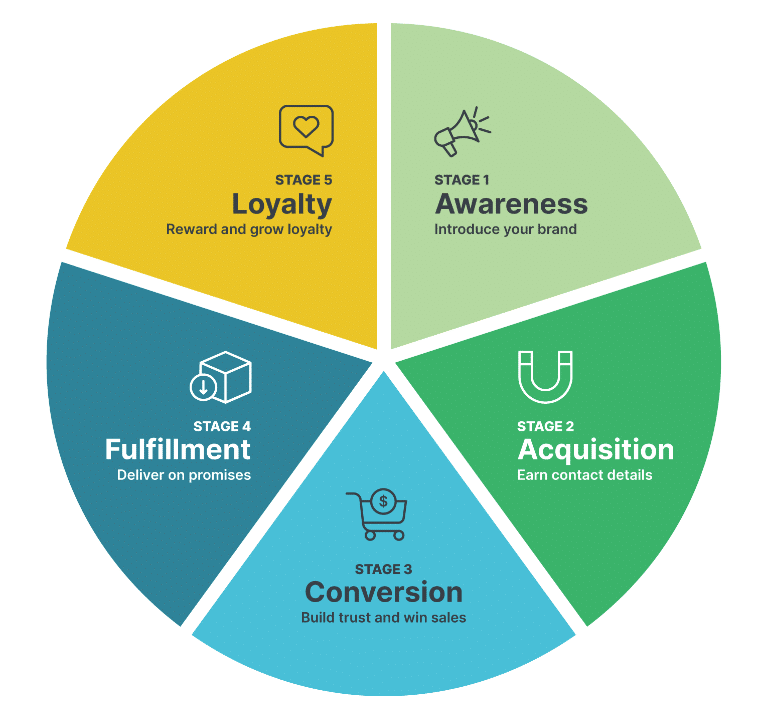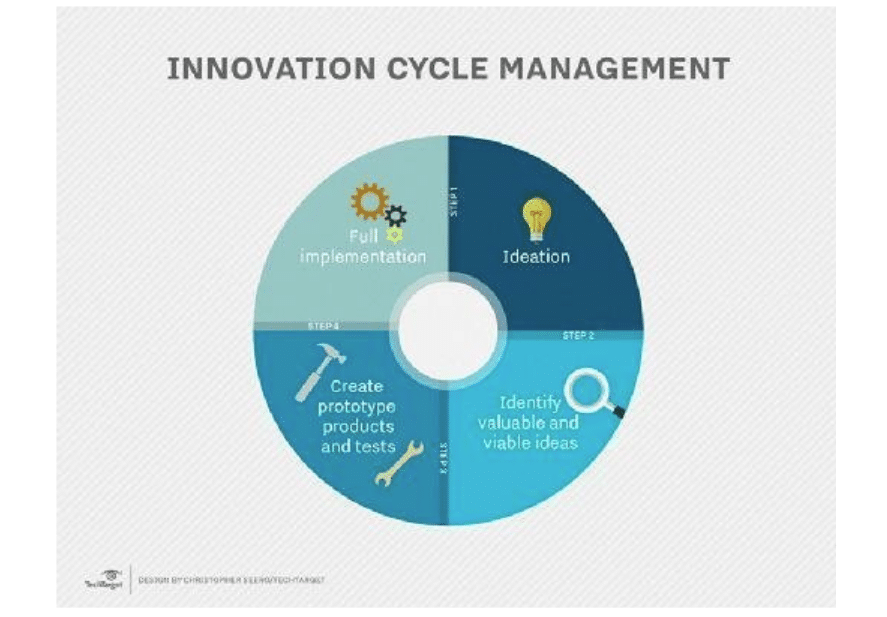Nurturing your online customers is crucial when building long-term business relationships that are beneficial for both your clients and your business itself. Through the right processes, nurtured customers will feel attached to your business and would never have second thoughts about buying products or services from anyone else (i.e. your competitors).
However, many businesses struggle with nurturing their online customers because it is hard to know where to start or what even constitutes an effective strategy. While the right strategy leads to great results, the wrong strategy can quickly destroy any form of relationship that has been built.
This article will explore the basics of customer nurturing, look at how it works and help you decide if this strategy is right for your business. We’ll also cover some key elements of successful strategies so that you can implement them in your particular business situation. Let’s get started.
What is customer nurturing?
Customer nurturing is the practice of building a long-term relationship with your customers, a relationship that ends up being mutually beneficial.
Ultimately, you’ll want to focus on providing the level of personalized service that makes customers feel like you’re talking directly to them—having a personal connection will encourage them to keep coming back for more and recommend you to their friends and family.
While many marketers use customer nurturing as part of an acquisition marketing strategy (to help convert casual visitors into paying customers), others claim that this method works equally well when used as part of a retention or loyalty marketing plan—essentially, you can apply customer nurturing to any stage of the marketing cycle.
The benefits of investing in your online customers
By implementing a systematic approach to keeping in contact with your online customers you’ll be giving them plenty of opportunities for engagement. At each step, they’ll become more familiar with your products and services, which will increase their desire to purchase from you again. The following are some great reasons why you should consider investing in customer nurturing.
-
Improved customer retention
By engaging with your customers at regular intervals it’s possible to significantly improve customer retention rates. Taking the time to set up a regular program of nurturing emails is a very effective way of keeping your existing customers coming back time after time, without having to spend large amounts of money on advertising or other customer acquisition methods.
-
Higher engagement, sales, and conversion rates
Customer nurturing works very well in conjunction with a targeted marketing approach, so you’ll be able to reach out to your customers when they are most interested in buying from you. This will have the effect of increasing sales conversion rates and allow you to close more deals at higher margins.
Brands can nurture their customers and grow a positive reputation by keeping them up-to-date on the latest happenings in their industry and by providing valuable information. This will lead to more customer engagement, which is key for marketers looking to promote a product or service.
-
Grow your social media following
A well-executed nurturing program will result in higher levels of customer engagement, which is exactly what you want if you’re using social media as a marketing channel. High levels of engagement are crucial for success on all social media networks because they play a big part in determining how visible your posts become.
Essentially, if you get people talking about your brand then there’s a good chance that it’ll go viral. Taking this into consideration, investing time and effort into building an effective nurturing campaign should be a priority for all marketers.
-
Improved brand loyalty
By nurturing your online customers you’ll be able to build up stronger, more trusting relationships with them which will encourage them to purchase again and again—simply because they know that your brand is reliable.
You should also consider offering incentives such as coupons or special discounts for loyal customers who continue to engage with your product promotions regularly. This can include offering first dibs on new products or services before anyone else has the opportunity to buy them.
The benefits of being loyal to a brand are pretty obvious for customers – stick with one vendor and you can expect consistent levels of service, whereas changing providers every time there’s an offer elsewhere, means that you’re likely to receive inconsistent service which can sometimes even result in a decline in product quality.
How to create a successful customer nurture strategy
Now that we’ve gone over the benefits that you can expect to get from taking care of your online customers, let’s now speak about what’s required to create an effective nurturing strategy.
Step 1: Identify your customers
The first step is to identify those customers who you believe would benefit from a nurturing program. This can be done using data from your CRM software, as well as information from the order capture process which will tell you what specific products or services each of your customers buys.
If you find that customer acquisition figures are high but conversions rates are surprisingly low, it might be worth thinking about investing in a nurturing strategy. This is because you probably have lots of customers who are ready to buy but just don’t know it yet!
One of the ways a business can benefit from CRM information is through the identification of potential nurture candidates. This can prove invaluable because providing relevant information to such customers on a regular basis will raise brand awareness and improve brand loyalty among prospects.
This will inevitably result in them purchasing from you more often.
Step 2: Define goals for your customer nurturing program
Once you’ve got an idea of exactly who you’re looking to reach, next comes the task of defining goals that are directly related to your business. The first goal should be based upon finding out exactly what types of problems those customers face, so you’ll know how to tailor future messages towards resolving their issues or providing information that they’ll find useful.
Another goal should involve determining which products people are interested in buying so you can send them promotional offers at just the right time. This can also increase sales conversions because such customers will have already demonstrated a genuine interest in your product range – before you even start trying to sell them anything.
Step 3: Create effective content
The key here is making sure that your message matches the audience that you’re trying to reach. If the people you’ve identified as potential customers are active on a particular social media channel where the social aspect is a priority, then chances are they’ll respond well to friendly, informal messages which sound like they’ve been written by a friend rather than a faceless corporation.
Having transparency in the workplace is also vitally important to customers, whether they’re individual consumers or business-to-business buyers. If you can show that you’re an ethical and responsible company, customers are more likely to remain loyal to your brand in the long term – even if a better offer comes along.
The main thing is to think about your message from the recipient’s point of view and treat customers like the individual they are—selling isn’t always the best way forward when it comes to customer relations.
Constantly trying to sell something can sometimes encourage antagonism amongst customers who feel like they’re being manipulated into buying something. To avoid this problem, it’s often much better if you provide helpful information instead of directly pitching for business.
There are various ways to use content marketing to boost conversions and sales while nurturing your customers at the same time. For example, you could create a useful guide or “how-to” video which provides information that your potential customers will find useful. Then, you could include a link to your site in the description where they can purchase products or services related to that topic.
When it comes to content, there are various strategies that you can explore. Let’s look into a few of them.
Build up your personal brand through blogging
Blogging is a great way to build up your personal brand and improve the relationship you have with your customers. You can blog on your website through WordPress or you can use a free blogging platform such as Blogger or Outreachway to avoid having to pay any up-front costs while you’re getting started.
By creating useful and informative content for your readers, you’ll build up an audience of people who’ll be interested in what you have to say and will likely share that information with others. This will help increase the amount of traffic coming into your site which should improve conversions over time.
Blogging is far less expensive than other forms of advertising because it focuses on building relationships rather than trying to drum up business immediately through sales messages.
Use emails to nurture your online customers
Emails are another way of connecting with your customers and use persuasive techniques to nurture them on a more personal level. For customer nurturing purposes, you should write emails that are to-the-point and focused upon providing information that is relevant to the interests of your intended audience.
Ensuring that the content of your emails is relevant to the people you’re trying to target is the key to building good relationships and encouraging people to read your messages. You should consider using an email software provider to manage your mailing list because this will help you avoid having to worry about the technical details of sending bulk emails.
In addition, most email software providers offer a range of useful features that can be used to boost customer open rates, click-through rates as well as other conversion rates including A/B testing. This means that you’ll be able to send different variants of an email campaign to see how they perform and then look at the right analytics to get valuable insights into which strategies are working best.
Step 4: Deliver on your promises
A nurturing campaign is built on trust, which is achieved by delivering on your promises. If you want to be successful at building customer relationships, you need to make sure that what you provide lives up to the expectations set by your nurturing messages.
When it comes to delivering on promises, one of the best ways to boost customer confidence is by including clear information that lists all of the benefits of doing business with you. In addition, you should provide the right contact information, so that people have an easy way of getting in touch if they want to find out more.
All the products and services you offer should be attractive enough to encourage people to buy, but it’s important not to focus too much on making sales all the time because, as mentioned, this can come across as pushy and will damage (rather than solidify) your reputation.
Building up the trust factor in your business takes time but it’s well worth the effort. When you have a track record of delivering on your promises people are more likely to buy from you in the future. As a result, your nurturing campaign should start generating revenue over time and will become self-funding.
if you’ve got a good product, consistently provide great service, and focus upon building relationships with customers who share your interests, you should see some positive results both in the short-term and even in the long term.
Step 5: Don’t be afraid to innovate
It’s a mistake to think that your business should always move in the same direction because even if you’re successful at what you do it’s important to consider new opportunities.
For example, small companies often start out focusing upon a narrow range of goods and services but over time they may find that they’re able to branch out into related fields due to their knowledge and experience. In some cases, this can lead to additional revenue streams which can provide a welcome boost so don’t be afraid of looking beyond the traditional methods if there are better ways of doing things.
Innovation is a process that requires effort and an eye for detail because it’s not always easy to spot gaps in the market or new opportunities to improve upon what you do. Having said that, one of the great things about being a business owner is that you have a degree of freedom that isn’t available to employees, so don’t be afraid to experiment with new ideas if there could be significant benefits further down the line.
Step 6: Track results and continually improve
Once you start running marketing campaigns it’s important to monitor the results so that you can refine your approach, identify further gaps in the market, and ensure that everything is working as efficiently as possible. Without this feedback loop, businesses tend to work on assumptions. This can be a dangerous strategy since without factual data, one might not be seeing all sides of the story when making decisions.
Nurturing campaigns involve more than simply designing adverts or writing press releases; instead, these tactics need to be integrated into a coherent campaign that drives people towards buying your products or services.
The best way of tracking results is through analytics tools such as Google Analytics that provide detailed statistics about who exactly is visiting your site and whether they’re taking the actions you’re interested in—such as subscribing to newsletters, buying products, or requesting a callback.
Once you understand how people are interacting with your site, then you can develop specific strategies that will help yield the best possible results over time. For example, if it turns out that visitors aren’t engaging with certain pages on your site then this could be an indication that they’re not relevant so you could either remove them completely or switch the message being shared.
Conclusion
Building and nurturing relationships with your online customers is about more than just making sales. If you want to maximize your profits and keep customers coming back for more in the long term, you need to understand their individual needs and preferences, provide them with services or products that will fulfill these requirements, and offer the best possible after-sales service possible. All of this is done so that customers know they can shop with confidence.
Developing a nurturing strategy requires effort and attention to detail. With the right plan in place, you’ll be able to build long-lasting relationships that can lead to additional sales, referrals, and repeat business.












